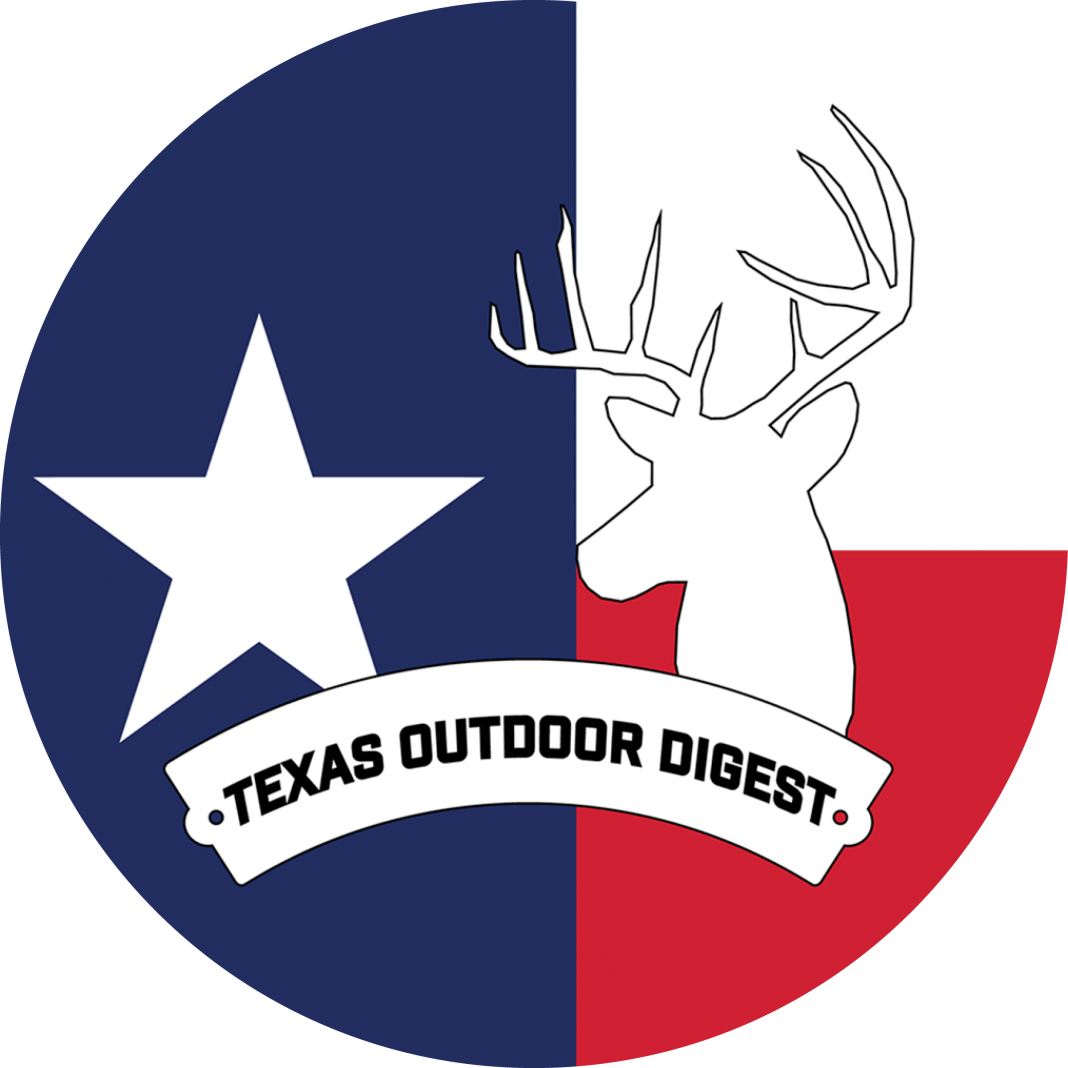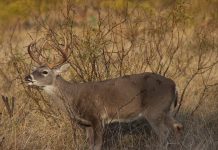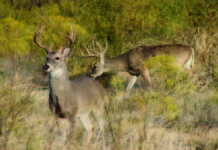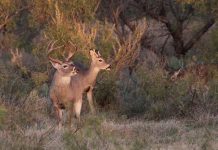Nearly 300 tissue samples were collected from hunter harvested mule deer from the Trans Pecos ecoregion of far West Texas during the 2012-13 season for Chronic Wasting Disease testing.
Texas A&M Veterinary Medical Diagnostic Laboratory and National Veterinary Services Laboratories confirmed CWD in four of those samples, according to a news release. All CWD-positive deer were harvested within the CWD Containment Zone.
Of 298 deer sampled during hunting season, 107 were harvested in the Containment Zone, 93 were harvested in the adjacent High Risk Zone, 25 were harvested in the Buffer Zone, and 73 deer were harvested outside of the CWD zones, according to the release. Nineteen of the samples collected from the Containment Zone were from deer harvested in the Hueco Mountains.
“The good news is that CWD has not been detected in Texas outside of the Hueco Mountains of northern El Paso and Hudspeth counties,” said Mitch Lockwood, Big Game Program Director with the Texas Parks and Wildlife Department, in the release.
Including the two positives reported from TPWD’s strategic sampling effort last summer, and the three positives reported by New Mexico Game and Fish last year, CWD has been detected in nine of 31 deer sampled in the Hueco Mountains.
CWD is a member of the group of diseases called transmissible spongiform encephalopathies. Other diseases in this group include scrapie in sheep, bovine spongiform encephalopathy (BSE or mad cow disease) in cattle, and Cruetzfeldt-Jakob disease in humans. CWD among cervids is a progressive, fatal disease that commonly results in altered behavior as a result of microscopic changes made to the brain of affected animals. An animal may carry the disease for years without outward indication, but in the latter stages, signs may include listlessness, lowering of the head, weight loss, repetitive walking in set patterns, and a lack of responsiveness. CWD is not known to affect humans, according to the release.
There is no vaccine or cure for CWD, but steps have been taken to minimize the risk of the disease spreading from beyond the area where it currently exists. The Texas Parks and Wildlife Commission and Texas Animal Health Commission adopted rules restricting movement of deer, elk, and other susceptible species within or from the CWD Zones, and enhancing surveillance efforts.






















